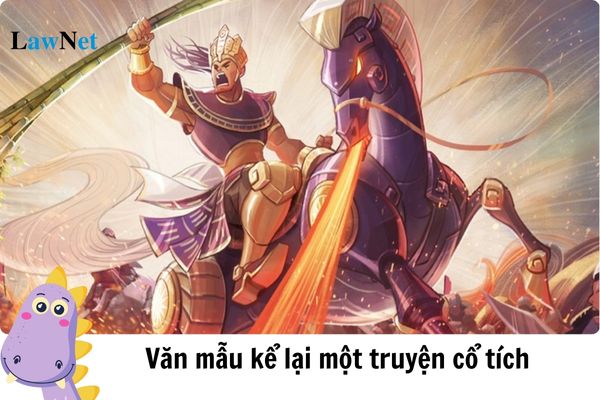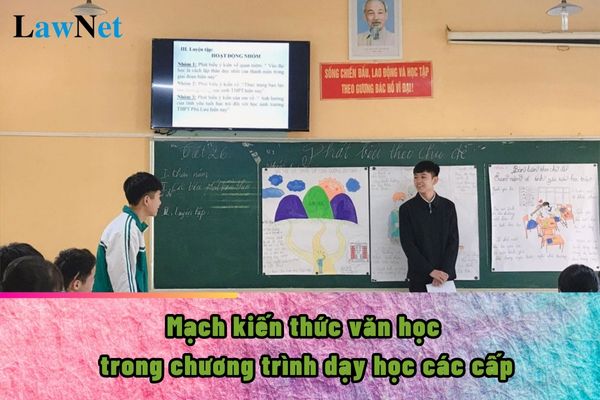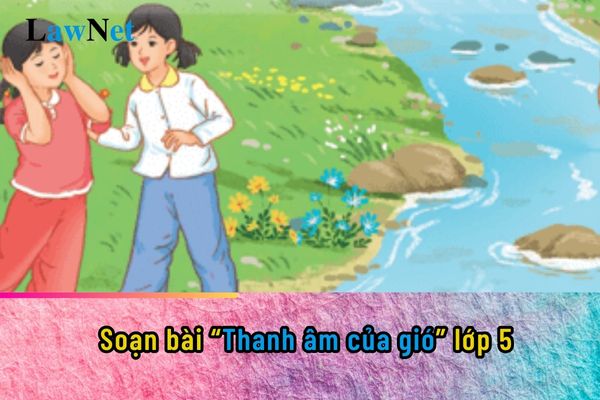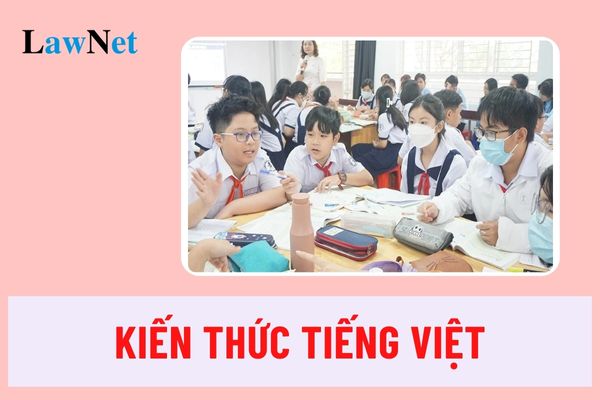Guidelines for grade 6 students to write a text on retelling a fairy tale according to grade 6 Literature curriculum in Vietnam
Guidelines for grade 6 students to write a text on retelling a fairy tale according to grade 6 Literature curriculum in Vietnam
Retelling a fairy tale is one of the contents in grade 6 literature. Here are some guidelines to write a text on retelling a fairy tale:
Retelling the Story of Tam Cam
| Vietnamese | English |
|
Truyện Tấm Cám kể về cuộc đời của cô Tấm hiền lành, nết na. Mồ côi mẹ từ nhỏ, Tấm sống với cha và dì ghẻ cùng con riêng của bà là Cám. Sau khi cha mất, Tấm phải chịu đựng sự hành hạ của dì ghẻ và Cám. Tấm bị bắt làm việc quần quật, chịu cảnh mắng nhiếc. Một lần, dì ghẻ tổ chức thi mò cua bắt ốc, Tấm bị Cám lừa lấy hết tôm cua. Tấm khóc, ông Bụt hiện lên bảo cô nuôi cá bống. Dì ghẻ phát hiện, lừa Tấm đi xa rồi bắt cá bống ăn thịt. Tấm khóc, ông Bụt lại giúp cô tìm xương cá và chôn ở chân giường. Nhà vua mở hội tuyển vợ, Tấm muốn đi nhưng bị dì ghẻ bắt nhặt gạo đỗ. Ông Bụt giúp Tấm hoàn thành công việc và cho cô váy áo đẹp. Trên đường đi, Tấm đánh rơi giày, vua nhặt được và ra lệnh ai đi vừa giày sẽ làm vợ vua. Tấm thử giày vừa, trở thành hoàng hậu. Dù làm hoàng hậu, Tấm vẫn chăm chỉ. Khi về quê giỗ cha, Tấm bị dì ghẻ lừa trèo cây cau rồi chặt gốc, khiến cô ngã chết. Tấm hóa thành chim vàng anh, bay vào cung vua. Cám giết chim, từ lông chim mọc lên cây xoan. Cám chặt cây làm khung cửi, khung cửi bị đốt thành tro, từ tro mọc lên cây thị. Bà lão bán nước nhặt quả thị về, Tấm từ quả thị bước ra giúp bà việc nhà. Vua đi tuần, thấy trầu têm giống vợ, gặp lại Tấm và đưa cô về cung. Mẹ con Cám bị đuổi đi biệt xứ. Câu chuyện kết thúc có hậu, Tấm sống hạnh phúc bên vua, còn mẹ con Cám nhận hậu quả xứng đáng. |
The story of "Tam Cam" revolves around the life of the kind and gentle girl named Tam. Orphaned from a young age, Tam lived with her father, stepmother, and stepsister Cam. After her father passed away, Tam had to endure maltreatment from her stepmother and Cam. Forced to work hard and endure constant scolding, Tam once participated in a competition organized by her stepmother to catch shrimp and crabs. Cam tricked Tam and took all her catches. Tam cried and Buddha appeared, telling her to raise a carp. The stepmother discovered it, tricked Tam into going far away, and cooked the carp for food. Tam cried again, and Buddha helped her find the carp bone and bury it in the bed's foot. When the king organized a search for a queen, Tam wanted to go, but her stepmother made her separate rice from beans. Buddha helped Tam complete the task and provided her with beautiful clothes. On her way, Tam lost a shoe. The king found it and ordered that whoever fit the shoe would become his queen. Tam tried it on, fit, and became the queen. Even as queen, Tam remained hardworking. Returning home for her father's memorial, she was tricked by her stepmother into climbing a betel tree, which was then chopped down, leading to her death. Tam transformed into a nightingale that flew into the palace. Cam killed the bird, but from the feathers grew a golden oak tree. Cam cut down the tree for a loom. The loom was burned, and from its ashes grew a persimmon tree. An old woman selling water found the persimmon fruit, and Tam emerged from it to help her with chores. The king, recognizing the betel leaves folded like his wife's, found Tam again and brought her back to the palace. The stepmother and Cam were banished forever. The story ends happily with Tam living blissfully with the king, while the stepmother and Cam received well-deserved consequences. |
Retelling the Story of Son Tinh, Thuy Tinh
| Vietnamese | English |
|
Truyện "Sơn Tinh, Thủy Tinh" là một truyền thuyết cổ xưa của Việt Nam, lấy bối cảnh thời Hùng Vương thứ mười tám. Vua Hùng có một người con gái xinh đẹp, hiền dịu tên là Mị Nương. Khi nàng đến tuổi trưởng thành, vua muốn tìm cho nàng một người chồng xứng đáng. Hai chàng trai đến cầu hôn là Sơn Tinh và Thủy Tinh, đều khôi ngô tuấn tú và có nhiều phép lạ. Sơn Tinh đến từ vùng núi Tản Viên, có khả năng tạo ra núi đồi, còn Thủy Tinh đến từ vùng biển, có thể hô mưa gọi gió. Vua Hùng quyết định ai mang đủ sính lễ gồm một trăm ván cơm nếp, một trăm nệp bánh chưng, voi chín ngà, gà chín cựa, ngựa chín hồng mao đến trước sẽ được cưới Mị Nương. Ngày hôm sau, Sơn Tinh đến trước và rước Mị Nương về núi. Thủy Tinh đến sau, tức giận và đem quân đuổi theo. Thủy Tinh hô mưa gọi gió, dâng nước ngập nhà cửa, đồi núi, khiến nhân dân khốn đốn. Sơn Tinh dùng phép lạ nâng đồi núi cao lên để ngăn nước. Hai bên giao chiến suốt mấy tháng trời, cuối cùng Thủy Tinh kiệt sức phải rút quân. Hằng năm, Thủy Tinh vẫn dâng nước đánh Sơn Tinh nhưng không bao giờ thắng được. Câu chuyện không chỉ giải thích hiện tượng lũ lụt hàng năm mà còn thể hiện khát vọng chế ngự thiên tai của người dân xưa. |
The tale of "Son Tinh, Thuy Tinh" is an ancient Vietnamese legend set during the reign of the eighteenth Hung King. The king had a beautiful and kind daughter named Mi Nuong. When she came of age, the king sought a worthy husband for her. Two suitors, Son Tinh and Thuy Tinh, both handsome and magical, came to propose. Son Tinh came from Tan Vien mountain and could create mountains, while Thuy Tinh from the sea could command rain and storms. The king decided whoever brought the betrothal gifts, including one hundred trays of sticky rice, one hundred chung cakes, nine ivory elephants, nine-cock fighting chickens, and nine-red-hair horses first would marry Mi Nuong. The next day, Son Tinh arrived first and brought Mi Nuong to his mountain. Arriving later, Thuy Tinh, in anger, pursued them with his army. Thuy Tinh summoned storms, flooding homes and mountains, causing much distress. Son Tinh used his magic to elevate the mountains, blocking the water. They battled for months until Thuy Tinh was exhausted and retreated. Every year, Thuy Tinh raises waters to attack Son Tinh but always fails. The story not only explains the annual flooding phenomenon but also reflects the ancient people's desire to conquer nature. |
Retelling the Story of Thach Sanh
| Vietnamese | English |
|
Truyện "Thạch Sanh" kể về một cậu bé mồ côi tên Thạch Sanh, con của Ngọc Hoàng đầu thai xuống trần gian. Khi cha mẹ mất, Thạch Sanh sống một mình dưới gốc đa với gia tài duy nhất là lưỡi búa của cha. Một ngày, Lý Thông, một người hàng rượu, kết nghĩa anh em với Thạch Sanh để lợi dụng. Trong vùng có con chằn tinh ăn thịt người, dân làng phải nộp người hàng năm. Đến lượt Lý Thông, hắn lừa Thạch Sanh đi thay. Thạch Sanh giết chằn tinh, lấy được cung tên vàng. Lý Thông lừa Thạch Sanh trốn đi và đem đầu chằn tinh nộp vua, được phong Quận công. Vua mở hội chọn chồng cho công chúa, nhưng nàng bị đại bàng khổng lồ bắt đi. Thạch Sanh bắn bị thương đại bàng và tìm ra hang ổ của nó. Lý Thông gặp lại Thạch Sanh, biết chỗ ở của đại bàng và lừa Thạch Sanh xuống hang cứu công chúa. Sau khi cứu công chúa, Lý Thông lấp cửa hang để giết Thạch Sanh. Thạch Sanh thoát ra và cứu con trai vua Thủy Tề, được tặng cây đàn. Hồn chằn tinh và đại bàng báo thù, vu oan cho Thạch Sanh, khiến chàng bị bắt. Công chúa buồn rầu từ khi về cung, chỉ vui khi nghe tiếng đàn của Thạch Sanh. Vua gọi Thạch Sanh đến, nghe chàng kể lại sự việc và bắt mẹ con Lý Thông. Thạch Sanh tha cho họ, nhưng trên đường về, họ bị sét đánh chết. Vua gả công chúa cho Thạch Sanh. Các hoàng tử chư hầu tức giận, kéo quân đánh. Thạch Sanh dùng cây đàn làm binh lính bủn rủn, phải xin hàng. Thạch Sanh thết đãi họ bằng niêu cơm nhỏ nhưng ăn mãi không hết. Vua nhường ngôi cho Thạch Sanh, chàng sống hạnh phúc bên công chúa. Câu chuyện thể hiện tính hiền lành, tốt bụng của Thạch Sanh và sự trừng phạt kẻ ác như mẹ con Lý Thông, với thông điệp "ở hiền gặp lành" và "ác giả ác báo". |
The story of "Thach Sanh" tells of an orphaned boy named Thach Sanh, the reincarnation of the Jade Emperor's son. After his parents passed away, Thach Sanh lived alone under a banyan tree with an axe as his only possession. One day, Ly Thong, a wine seller, befriended Thach Sanh to exploit him. In the region, there was an ogre that demanded human sacrifices annually. When it was Ly Thong's turn, he tricked Thach Sanh into going in his place. Thach Sanh killed the ogre and took its gold bow. Ly Thong tricked Thach Sanh into hiding and presented the ogre's head to the king, earning the title of Duke. The king held a tournament to choose a husband for the princess, who was then kidnapped by a giant eagle. Thach Sanh wounded the eagle and discovered its lair. Reuniting with Ly Thong, who learned the eagle's hiding place, he tricked Thach Sanh into rescuing the princess while sealing him in the cave. Thach Sanh escaped and saved the prince of the Water God, receiving a magical guitar in gratitude. The spirits of the ogre and eagle sought revenge by framing Thach Sanh, leading to his imprisonment. The princess was miserable upon returning to the palace, brightening only when she heard Thach Sanh's guitar. The king summoned Thach Sanh, listened to his story, and imprisoned Ly Thong and his mother. Thach Sanh spared them, but they were struck dead by lightning on their way home. The king married his daughter to Thach Sanh. Jealous neighboring princes attacked, but weakened by the guitar, they surrendered and were fed endlessly from a small pot of rice. The king abdicated to Thach Sanh, who lived happily with the princess. The story highlights Thach Sanh's kindness and the punishment of evil, with the message of "good deeds beget good fortunes" and "evil begets evil." |
Retelling the Story of Thanh Giong (Saint Giong)
| Vietnamese | English |
|
Câu chuyện "Thánh Gióng" kể về một cậu bé kỳ lạ ở làng Gióng, thời vua Hùng Vương thứ sáu. Hai vợ chồng già chăm chỉ làm ăn, mong ước có con. Một ngày, người vợ thấy vết chân to ngoài đồng, đặt chân mình vào và sau đó thụ thai. Mười hai tháng sau, bà sinh ra một cậu bé khôi ngô nhưng đến ba tuổi vẫn không biết nói, cười hay đi lại. Khi giặc Ân xâm lược, vua Hùng sai sứ giả đi tìm người tài cứu nước. Nghe tiếng sứ giả, cậu bé bỗng cất tiếng nói, yêu cầu mẹ mời sứ giả vào. Cậu bé bảo sứ giả về tâu vua sắm cho mình ngựa sắt, roi sắt và áo giáp sắt để đánh giặc. Sứ giả kinh ngạc nhưng mừng rỡ, vội về tâu vua. Nhà vua truyền làm gấp những vật dụng cậu bé yêu cầu. Từ sau hôm gặp sứ giả, cậu bé lớn nhanh như thổi, ăn bao nhiêu cũng không no, áo vừa mặc đã căng đứt chỉ. Hai vợ chồng già không đủ nuôi con, phải nhờ bà con làng xóm giúp đỡ. Ai cũng vui lòng góp sức vì mong muốn giết giặc cứu nước. Khi giặc đến chân núi Trâu, tình thế nguy cấp, sứ giả đem ngựa sắt, roi sắt và áo giáp sắt đến. Cậu bé vùng dậy, vươn vai biến thành tráng sĩ cao lớn, oai phong. Tráng sĩ mặc áo giáp, cầm roi, nhảy lên ngựa sắt phun lửa, phi thẳng đến nơi có giặc, đánh giết hết lớp này đến lớp khác. Khi roi sắt gãy, tráng sĩ nhổ cụm tre cạnh đường quật vào giặc, khiến chúng tan vỡ, chạy trốn. Tráng sĩ đuổi đến chân núi Sóc, rồi bay lên trời cùng ngựa. Vua phong tráng sĩ là Phù Đổng Thiên Vương và lập đền thờ ở quê nhà. Hiện nay, đền thờ vẫn còn ở làng Phù Đổng, tục gọi là làng Gióng. Mỗi năm, làng mở hội lớn vào tháng tư. Người ta kể rằng, những bụi tre đằng ngà ở huyện Gia Bình bị ngựa phun lửa cháy nên ngả màu vàng óng, còn những vết chân ngựa thành ao hồ liên tiếp. Khi ngựa thét ra lửa, lửa thiêu cháy một làng, nên làng đó gọi là làng Cháy. Câu chuyện Thánh Gióng để lại ấn tượng sâu sắc, thể hiện truyền thống đoàn kết chống giặc cứu nước và ước mơ có sức mạnh vật chất, tinh thần để chiến thắng mọi kẻ thù xâm lược của nhân dân. |
The story of "Saint Giong" tells of a miraculous boy in Giong village from the reign of the sixth Hung King. An elderly couple, desiring a child, found a large footprint in the field, and the wife stepped into it, then conceived. Twelve months later, she gave birth to a handsome boy who did not speak, smile, or walk by the age of three. When the An invaders attacked, the king sought a hero to save the country. Hearing the king’s herald, the boy suddenly spoke and asked his mother to invite the herald in. He instructed the herald to report to the king to prepare an iron horse, whip, and armor for him to fight. The herald was astonished but happy and reported to the king, who ordered the items to be made. From the day he met the herald, the boy grew rapidly, eating endlessly, bursting through clothes. The elderly couple couldn't afford to feed him and sought help from the villagers. Everyone eagerly contributed, hoping to defeat the invaders. As the enemy reached the Tro Mountain, the situation became dire. The herald brought the iron horse, whip, and armor. The boy grew into a giant, valiant warrior. Donning armor, he seized the whip and mounted the horse spouting flames, charging at the enemy, slaying them en masse. When the whip broke, he uprooted clumps of bamboo and continued the assault, scattering the invaders, who fled in terror. He pursued them to Soc Mountain and then ascended to the heavens with his horse. The king bestowed the title of Phu Dong Thien Vuong on the warrior and erected a temple in his honor. The temple still stands today in Phu Dong village, commonly known as Giong village. Every April, the village holds a grand festival. It is said that the bamboo clumps in Gia Binh district turned golden after exposure to the horse’s flames, and the hoofprints became a series of ponds and lakes. The village that burned from the horse’s flames is still called Lang Chay (Burnt Village). The story of Saint Giong leaves a profound impact, reflecting the spirit of unity in defending the country and the aspiration for both physical and spiritual strength to overcome invaders. |
Note: Above contents are for reference only!
How to calculate the average grade for grade 6 literature at the end of the semester in Vietnam?
Based on Article 9 of Circular 22/2021/TT-BGDDT, the average grade for grade 6 literature at the end of the semester is calculated using the following formula:


Guidelines for grade 6 students to write a text on retelling a fairy tale according to grade 6 Literature curriculum in Vietnam (Image from the Internet)
What are regulations on classfication of the academic results of grade 6 students in Vietnam?
According to Clause 2, Article 9 of Circular 22/2021/TT-BGDDT, the academic results of grade 6 students are classified into four levels as follows:
- Excellent:
+ All subjects assessed by comments are evaluated at the Pass level.
+ All subjects assessed by a combination of comments and scores have an average score (ĐTBmhk, ĐTBmcn) of 6.5 or higher, with at least 06 subjects having an average score of 8.0 or higher.
- Good:
+ All subjects assessed by comments are evaluated at the Pass level.
+ All subjects assessed by a combination of comments and scores have an average score (ĐTBmhk, ĐTBmcn) of 5.0 or higher, with at least 06 subjects having an average score of 6.5 or higher.
- Pass:
+ At most one subject assessed by comments is evaluated at the Fail level.
+ At least 06 subjects assessed by a combination of comments and scores have an average score (ĐTBmhk, ĐTBmcn) of 5.0 or higher; no subject has an average score below 3.5.
- Fail: Other cases.










- What are procedures for withdrawal from the Vietnam Association for Promoting Education?
- All contents of the Literature subject for grade 10 students in Vietnam
- Who are eligible for lunchtime support policy for preschool children in Vietnam?
- What are procedures for awarding the title of Honorary Doctorate to teachers in Vietnam?
- Are students who receive state scholarships to study abroad required to reimburse training costs when they do not return to Vietnam to work for authorized state agencies?
- Formula for calculating the area of a circle in the grade 5 curriculum in Vietnam
- Is there a limit on the number of students undertaking scientific research projects in Vietnam?
- According to the 2018 General Education Program, how is physics education implemented at three educational levels?
- Sample speech on the Mid-Autumn Festival in 2024 in Vietnam
- What are regulations on the knowledge of Literature for all levels in Vietnam?

